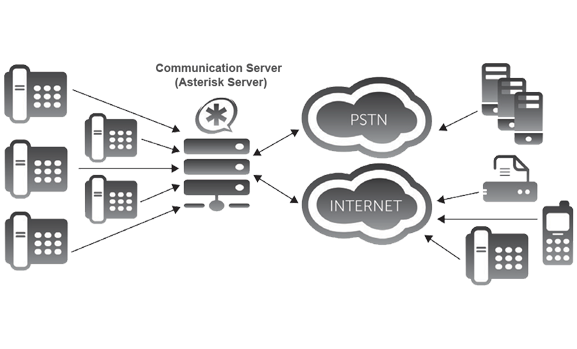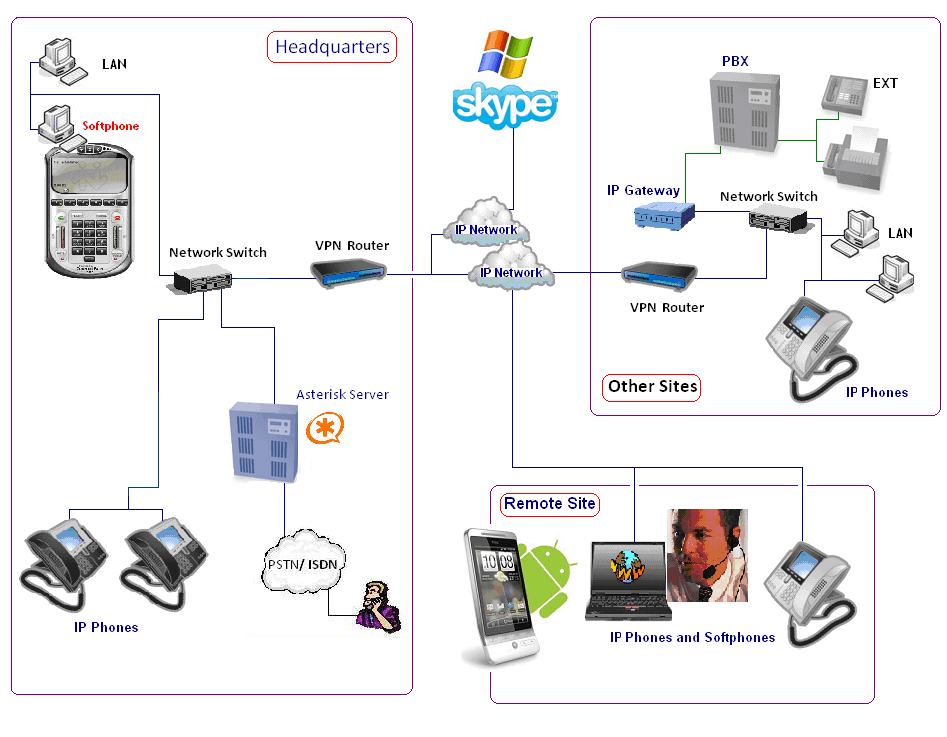Unlocking the Power of Asterisk, Installation, Support, and Monitoring
In today's fast-paced business environment, effective communication is crucial for success. One technology that has revolutionized communication systems is Asterisk. Asterisk, an open-source framework, provides a flexible and scalable solution for building feature-rich communication servers. In this article, we will explore the power of Asterisk by delving into its installation process, the importance of expert support, and the benefits of proactive server monitoring.
Asterisk Installation: Building a Solid Foundation:
The installation of Asterisk forms the backbone of a reliable communication server. It involves setting up the necessary hardware and configuring the software to ensure optimal performance. When installing Asterisk, it is essential to consider factors such as hardware requirements, operating system compatibility, and available installation methods. By following the recommended installation procedures, organizations can create a solid foundation for their Asterisk deployment.
To install Asterisk, start by selecting the appropriate hardware to support the anticipated call volume and required features. This involves choosing a server with adequate processing power, memory, and storage. Additionally, it is crucial to select a compatible operating system and ensure that the necessary dependencies are met.
The installation process can vary depending on the chosen method. Asterisk can be installed using packages provided by popular Linux distributions, or it can be compiled from source code for more advanced customization. Each installation method has its own advantages and considerations, and the article will explore the steps involved in both approaches.
Proper configuration of Asterisk is key to unleashing its power. This includes defining communication endpoints, setting up dial plans, and configuring security features. By following best practices and considering organizational requirements, businesses can optimize their Asterisk installation for seamless communication.

Asterisk Server Support: Harnessing Expertise for Smooth Operations:
Once Asterisk is installed, ongoing support is crucial to ensure smooth operations. Expert support provides organizations with access to knowledgeable professionals who can assist in various aspects of managing and maintaining an Asterisk server. From initial setup and configuration to troubleshooting and resolving issues, support services play a vital role in minimizing downtime and maximizing system efficiency.
Asterisk server support can be obtained through different channels. The Asterisk community offers online forums and mailing lists where users can seek assistance from fellow community members. Additionally, professional services are available from vendors and consultants specializing in Asterisk deployments. These services may include installation assistance, configuration reviews, and custom development.
For organizations requiring a higher level of support, managed services are an option. Managed service providers take care of the day-to-day management of the Asterisk server, including monitoring, maintenance, and updates. This allows businesses to focus on their core activities while relying on experts to ensure the smooth operation of their communication system.
By harnessing Asterisk server support, organizations can benefit from the knowledge and experience of experts who can guide them through complex scenarios, provide timely resolutions to issues, and offer recommendations for optimizing performance.

Asterisk Server Monitoring: Proactive Management for Optimal Performance:
Proactive server monitoring is crucial for maintaining a reliable and efficient Asterisk communication system. Monitoring involves continuously tracking the server's performance, call quality, and resource utilization to identify potential issues before they affect users.
Effective monitoring strategies for Asterisk involve utilizing monitoring tools that provide real-time insights into the system's health. These tools can track metrics such as CPU and memory usage, call volume, network traffic, and response times. By setting up alerts and notifications based on predefined thresholds, administrators can be promptly notified of any deviations from normal operation.
Monitoring also includes tracking call quality metrics such as jitter, packet loss, and latency. This information helps identify network or configuration issues that could impact call clarity and overall user experience. By monitoring call quality, administrators can take proactive steps to address any potential issues and ensure consistent and reliable communication.
Moreover, monitoring can provide valuable data for capacity planning and optimization. By analyzing trends and usage patterns, administrators can identify potential bottlenecks and plan for future growth. This proactive approach helps organizations stay ahead of their communication needs and ensures that the Asterisk server performs optimally at all times.
Best Practices for Asterisk Installation, Support, and Monitoring:
To ensure a successful Asterisk deployment, it is important to follow industry best practices. This section of the article will cover a range of best practices related to Asterisk installation, support, and monitoring.
Hardware selection: Choose hardware that meets the expected call volume and consider redundancy options for high availability.
Software configuration: Follow recommended guidelines for configuring Asterisk, including security settings, dial plan design, and module selection.
Regular updates: Keep the Asterisk software and related modules up to date to benefit from bug fixes, security patches, and new features.
Backup and recovery: Implement regular backups of the Asterisk configuration and relevant data to ensure quick recovery in case of system failures.
Security measures: Apply industry-standard security practices, such as strong passwords, firewall rules, encryption, and intrusion detection systems, to protect the Asterisk server from unauthorized access and attacks.
Documentation: Maintain detailed documentation of the Asterisk installation, configuration, and any modifications made, ensuring easy reference and troubleshooting in the future.
Conclusion:
Unlocking the power of Asterisk requires a holistic approach that covers installation, support, and monitoring. By following best practices and leveraging expert assistance, organizations can build reliable and feature-rich communication servers. Proactive monitoring ensures optimal performance and enables timely interventions. With Asterisk support, organizations can enhance their communication capabilities and tailor the system to their specific needs. By implementing these strategies, businesses can unlock the true potential of Asterisk and stay ahead in the ever-evolving world of communication technology.
Leveraging Open Source in ICT





